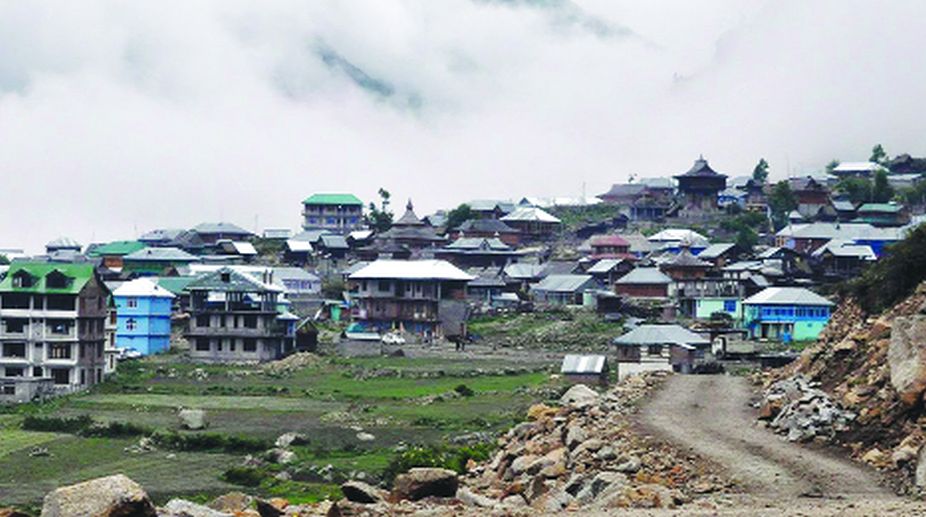Chitkul, a picturesque last village near Indo-Tibet border in tribal Kinnaur district in Himachal Pradesh is fast losing its traditional look.
Nicely carved wooden houses with slate roofs are becoming a thing of past in Chitkul and the concrete has taken over, with tribals trying to go for modern touch, increasingly.
At a height of 3450 metres, Chitkul with a population of around 800 is situated on the banks of the Baspa River. It is the first village of Baspa valley and the last village on the old Hindustan-Tibet trade route.
The remote village has been a preferred destination for domestic and foreign tourists visiting Sangla valley as it offers nature, adventure and the tradition.
It is located 28 kilometres ahead of Sangla.
Not many of them are however excited to see Chitkul and its surroundings of late as a number of concrete houses, hotels and rest houses have come up haphazardly with rooftops of tin, eclipsing natural environs of the area.
A few old wooden houses are still standing in Chitkul, crying for repairs, while the slate (stone) roofs have almost disappeared.
Most tourists say the village is no more attractive and the stay is also very costly in Chitkul for lack of regulation by authorities, so they usually decide to visit it during day, driving from Sangla.
“Sangla had started witnessing same trend some years back. But we created awareness and convinced the locals about ethnic and cultural value of wooden houses, which are warm also. In Chitkul, people are not ready to listen,” said Vidya Karan Negi, who heads the Sangla Valley Sustainable Development Society.
The Society had done substantial work to promote home stays in olden houses, wherein the tourists have a taste of the local culture and cuisine.
There are many home stays in Sangla now, but very few in Chitkul owing to fancy for ‘pucca’ structures, which fail to attract.
The locals in Chitkul justify their stand. “We do feel bad about the changing look and the lifestyle in Chitkul. But then what do we do? It is not easy to get the wood required for houses officially now and there is lot of strictness in removing waste wood from the forest as well. So what do we do?” said an aged resident, Om PrakashNegi.
He said the concrete houses are extremely cold in winters, but there is no alternative. “It is actually happening all over tribal area for different reasons,” he lamented.
The connoisseurs, who have seen old Chitkul, rue the absence of any effort on the part of state government, particularly the tourism department, to preserve the ethnic look of the tribal village.











